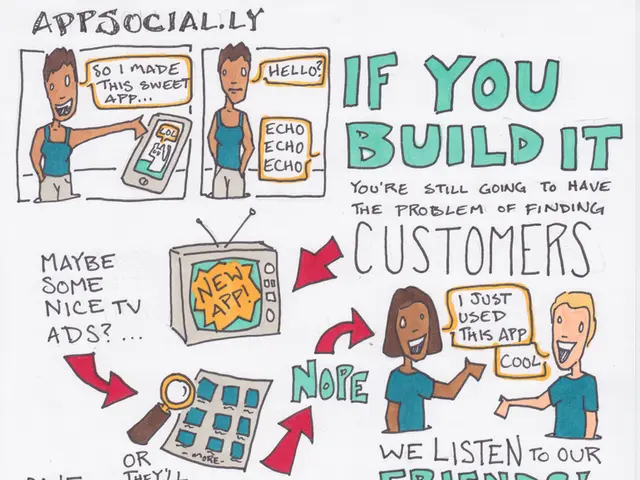Global businesses adopting AI strategies in the evolving landscape of mixed workforces, according to fresh research findings
In the era of rapidly advancing technology, businesses are adapting to the new normal by blending flexible and permanent talent. According to a recent study by Guidant Global and Raconteur, nearly half (49%) of employers report an improved work-life balance among employees with blended workforces.
This shift is not just a passing trend; it's a strategic move towards AI-powered teams. Over half (53%) of business leaders acknowledge AI as critical to their future success. Simon Blockley, Chief Executive Officer at Impellam UK and Europe, emphasizes the need for businesses to act now and blend flexible and permanent talent for success in the AI era.
The research indicates a clear divide between organizations prepared with agile, blended workforces and those risking falling behind due to skills gaps and outdated workforce models. More than half of employers surveyed (54%) identified technical skills gaps as a major challenge, especially in critical areas like cybersecurity (54%) and AI (53%).
However, the integration of flexible talent with AI expertise is proving to be a solution. Organizations successfully integrating flexible talent with AI expertise into their operations are addressing urgent skills gaps and future-proofing teams. As Claire Marsh, Chief Executive Officer at Impellam Group North America, states, traditional permanent workforces alone can no longer keep up with fast-changing market demands and evolving business needs due to the rise of AI and digital transformation.
The use of external talent has helped 75% of companies address skills shortages, while also bringing niche expertise that enhances team capabilities. Leaders in workforce strategy are more likely to have formalized processes for skills mapping (52%), resource planning (43%), and departmental hiring (40%).
The new research conducted by Guidant Global and Raconteur reveals that 90% of companies plan to increase their use of specialist contractors within the next 18 months. A striking 75% anticipate the blending of internal and external teams within the next one to two years.
The integration of flexible talent and AI expertise in workforce strategy addresses skills gaps and future-proofs teams by shifting from rigid job titles to agile, skills-based workforce planning. This approach combines upskilling internal talent with strategic use of AI to enhance workforce intelligence, automate routine tasks, and improve talent acquisition and management precision.
Boards and leadership are encouraged to incorporate strategic foresight and scenario planning around AI adoption and workforce demographics to ensure resilience and inclusivity in future talent strategies. The growing need for specialist skills, rising competition for talent, and accelerating digital transformation are driving forces behind this shift.
The message is clear: organizations that act now to build flexible, tech-ready teams will be best positioned to navigate complexity, drive innovation, and stay competitive in a rapidly changing world. Enhanced overall well-being (35%) is just one of the benefits that come with embracing a blended workforce model.
For more information on this research, visit the research by Guidant Global and Raconteur.
- In the AI era, businesses are integrating flexible talent with AI expertise to address urgent skills gaps and future-proof their teams (shift, teams).
- To stay competitive in a rapidly changing world, organizations are adopting a strategic approach, combining upskilling internal talent with the strategic use of AI technology in their workforce planning (technology, planning).




